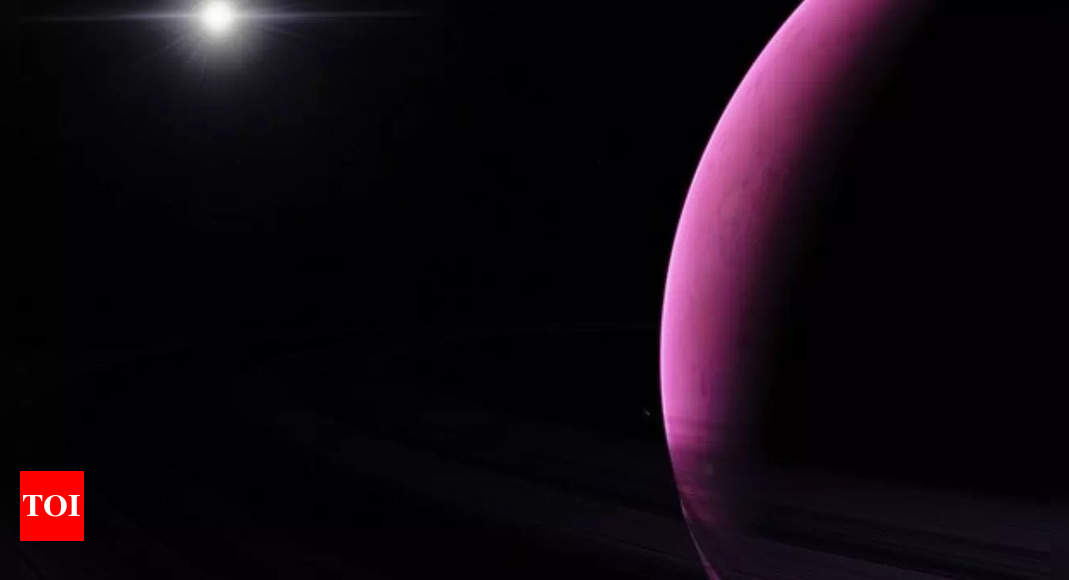WASHINGTON: A group led by UdeM astronomers has discovered proof that two exoplanets orbiting a purple dwarf star are “water worlds,” planets the place water makes up a big fraction of the amount.
These worlds, positioned in a planetary system 218 light-years away within the constellation Lyra, are in contrast to any planets present in our photo voltaic system.
The group, led by PhD scholar Caroline Piaulet of the Trottier Institute for Analysis on Exoplanets (iREx) on the Universite de Montreal, revealed an in depth examine of a planetary system referred to as Kepler-138 within the journal Nature Astronomy immediately.
Piaulet, who’s a part of Bjorn Benneke’s analysis group, noticed exoplanets Kepler-138c and Kepler-138d with NASA’s Hubble and the retired Spitzer house telescopes and found that the planets — that are about one and a half occasions the dimensions of the Earth — might be composed largely of water.
These planets and a planetary companion nearer to the star, Kepler-138b, had been found beforehand by NASA’s Kepler House Telescope.
Water wasn’t instantly detected, however by evaluating the sizes and lots more and plenty of the planets to fashions, they conclude {that a} important fraction of their quantity — as much as half of it — needs to be product of supplies which might be lighter than rock however heavier than hydrogen or helium (which represent the majority of fuel big planets like Jupiter).
The commonest of those candidate supplies is water.
“We beforehand thought that planets that had been a bit bigger than Earth had been large balls of steel and rock, like scaled-up variations of Earth, and that is why we known as them super-Earths,” defined Benneke.
“Nevertheless, we have now now proven that these two planets, Kepler-138c and d, are fairly completely different in nature: an enormous fraction of their whole quantity is probably going composed of water.
It’s the first time we observe planets that may be confidently recognized as water worlds, a kind of planet that was theorized by astronomers to exist for a very long time.” “We beforehand thought that planets that had been a bit bigger than Earth had been large balls of steel and rock, like scaled-up variations of Earth, and that is why we known as them super-Earths,” defined Benneke.
“Nevertheless, we have now now proven that these two planets, Kepler-138c and d, are fairly completely different in nature: an enormous fraction of their whole quantity is probably going composed of water.
It’s the first time we observe planets that may be confidently recognized as water worlds, a kind of planet that was theorized by astronomers to exist for a very long time.” With volumes greater than 3 times that of Earth and lots more and plenty twice as large, planets c and d have a lot decrease densities than Earth.
That is stunning as a result of many of the planets simply barely greater than Earth which were studied intimately up to now all appeared to be rocky worlds like ours.
The closest comparability to the 2 planets, say researchers, could be a few of the icy moons within the outer photo voltaic system which might be additionally largely composed of water surrounding a rocky core.
“Think about bigger variations of Europa or Enceladus, the water-rich moons orbiting Jupiter and Saturn, however introduced a lot nearer to their star,” defined Piaulet.
“As a substitute of an icy floor, Kepler-138 c and d would harbor massive water-vapor envelopes.” Researchers warning the planets might not have oceans like these on Earth instantly on the planet’s floor.
“The temperature in Kepler-138c’s and Kepler-138d’s atmospheres is probably going above the boiling level of water, and we anticipate a thick, dense ambiance product of steam on these planets.
Solely underneath that steam ambiance there might probably be liquid water at excessive strain, and even water in one other part that happens at excessive pressures, known as a supercritical fluid,” Piaulet stated.
.



Comment here